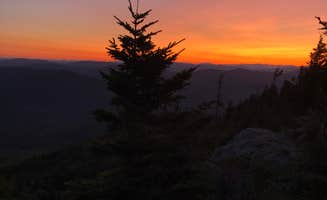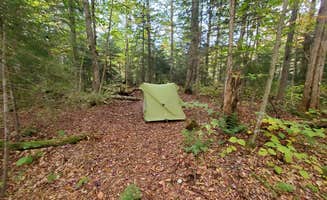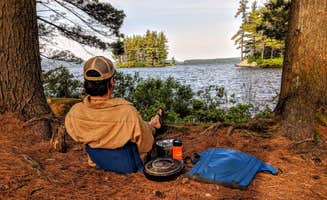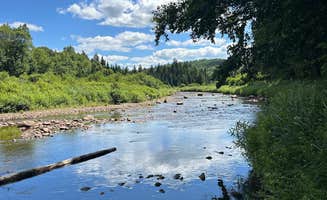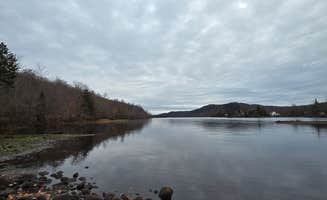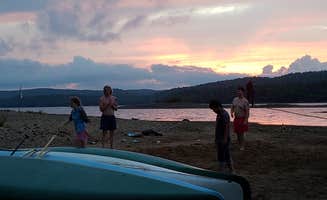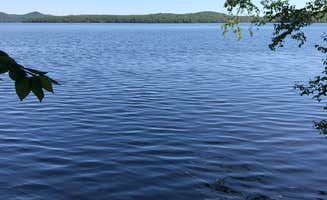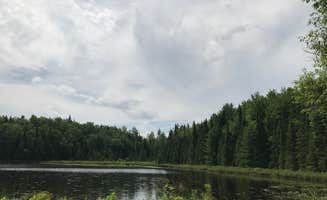Dispersed camping near Indian Lake, New York offers primitive sites throughout the Adirondack Park's 6 million acres. The region sits at elevations ranging from 1,500-2,000 feet with summer temperatures averaging 70-80°F days and 50-60°F nights. Most dispersed sites require visitors to pack out all trash completely, and seasonal black fly activity peaks from mid-May through June, making early fall the preferred camping season for many visitors.
What to do
Kayaking access points: Seventh Lake Primitive Camping provides excellent entry points for paddlers. "We accessed the sites by water on a canoe trip. There is a large sand bar within a very short walk which was a great place to hang out," notes Mary B., who discovered multiple campsites and a lean-to accessible by water.
Swimming opportunities: Stillwater Reservoir features multiple waterfront sites with swimming access. One visitor mentioned, "We saw Bald Eagles and Loons, enjoyed swimming, canoing and paddleboarding with the family." The reservoir's extensive shoreline provides numerous entry points for cooling off during summer months.
Hiking with elevation: Crane Mountain Pond Campsite rewards hikers with exceptional views. "After a short hike up steep crane mountain we watched the beautiful sun set. One of the nicest places I've camped at," reports T K. The trail gains approximately 1,150 feet in elevation over 1.4 miles to reach the pond camping area.
What campers like
Island camping experience: Many campers appreciate the island sites at Stillwater Reservoir. One visitor reports, "My wife and I kayaked to Long Island and stayed for a weekend. It was quiet and had the whole island to our self." These water-access-only sites require boats but reward campers with unparalleled seclusion.
Beach access: Sandy shorelines enhance the camping experience at several locations. Elizabeth B. describes Stillwater: "Our spot had gorgeous waterfront to it, a stone fire circle where someone had left extra fire wood, and ample trees. The season had had unusually low water all over and it left a really unusual landscape on the beach to explore."
Wildlife viewing: Ward Brook Campsite offers excellent nature observation opportunities. "Great campsite with a nice lean-to. Fire pit, picnic table, and a privy. A bit further you will find some tent spots too. Plenty of water around," reports Alex R. The site's location at the base of Seymour Mountain creates a natural corridor for wildlife.
What you should know
Road conditions: Many access roads require careful navigation. Rebecca B. notes about Horseshoe Lake: "Road is rough but easily doable if you take it slow. As it's a forest, the sites are pretty shaded, so solar and Starlink may present challenges."
Navigation challenges: Finding specific sites often requires advance planning or local knowledge. Taylor A. warns about Cod Pond Dispersed Pull-Off: "The directions in the app are accurate - but do keep in mind that the campsite is down a dirt road which is well hidden from the main road if you aren't paying close attention. There is no service at all."
Cell coverage limitations: Most sites have minimal or no connectivity. Sam T. appreciated the disconnection at Stillwater: "Would recommend if you want to break away from technology because you get zero service out there." This isolation applies to virtually all dispersed camping areas in the region.
Insect considerations: Biting insects can significantly impact camping comfort. One camper at Cod Pond reported: "The bugs were terrible." Bringing appropriate repellent and protective clothing is essential, particularly during warmer months.
Tips for camping with families
Accessible sites: Cod Pond Dispersed Pull-Off offers easier access for families with children. "Decent site right off of the 'main' road. 'Main' because it was quiet. Easy to access via a short dirt road, but also easy to miss," reports Josie W., adding that water access enhances the experience: "There was a fire ring and access to the river down a semi-steep bank. Beautiful to listen to at night."
Multi-generational camping: Larger sites can accommodate family groups. Christie M. notes about Stillwater: "It was so peaceful with our site #37 accomodating 20 members of the family plus 3 dogs!" These expansive sites provide space for multiple tents and gathering areas.
Water safety planning: Families camping near water should bring appropriate safety equipment. One camper mentions swimming opportunities at Stillwater but notes the importance of preparation: "The water levels vary significantly throughout the season," making shoreline conditions unpredictable.
Tips from RVers
Vehicle size limitations: Cod Pond Dispersed Pull-Off has specific vehicle constraints. Taylor A. cautions: "A car is not recommended. Possible to turn around but you definitely need a smaller SUV." Josie W. adds: "Site was big enough to pull our mid-size SUV down and unfold rooftop-tent, but we did have to back out in the morning; not enough room to turn around."
Road clearance requirements: Most dispersed sites require vehicles capable of handling unimproved roads. Kane observes about Stillwater: "I came here a couple days ago only to realize that all except one campsite needs a boat to be reached. It's first come first serve so best to find another place if you intend to drive up to your campsite."
Limited turnaround space: Many forest road pull-offs have restricted maneuvering room. RVs longer than 20 feet generally struggle at most dispersed sites, with longer rigs better suited to established campgrounds in the region rather than these primitive locations.


